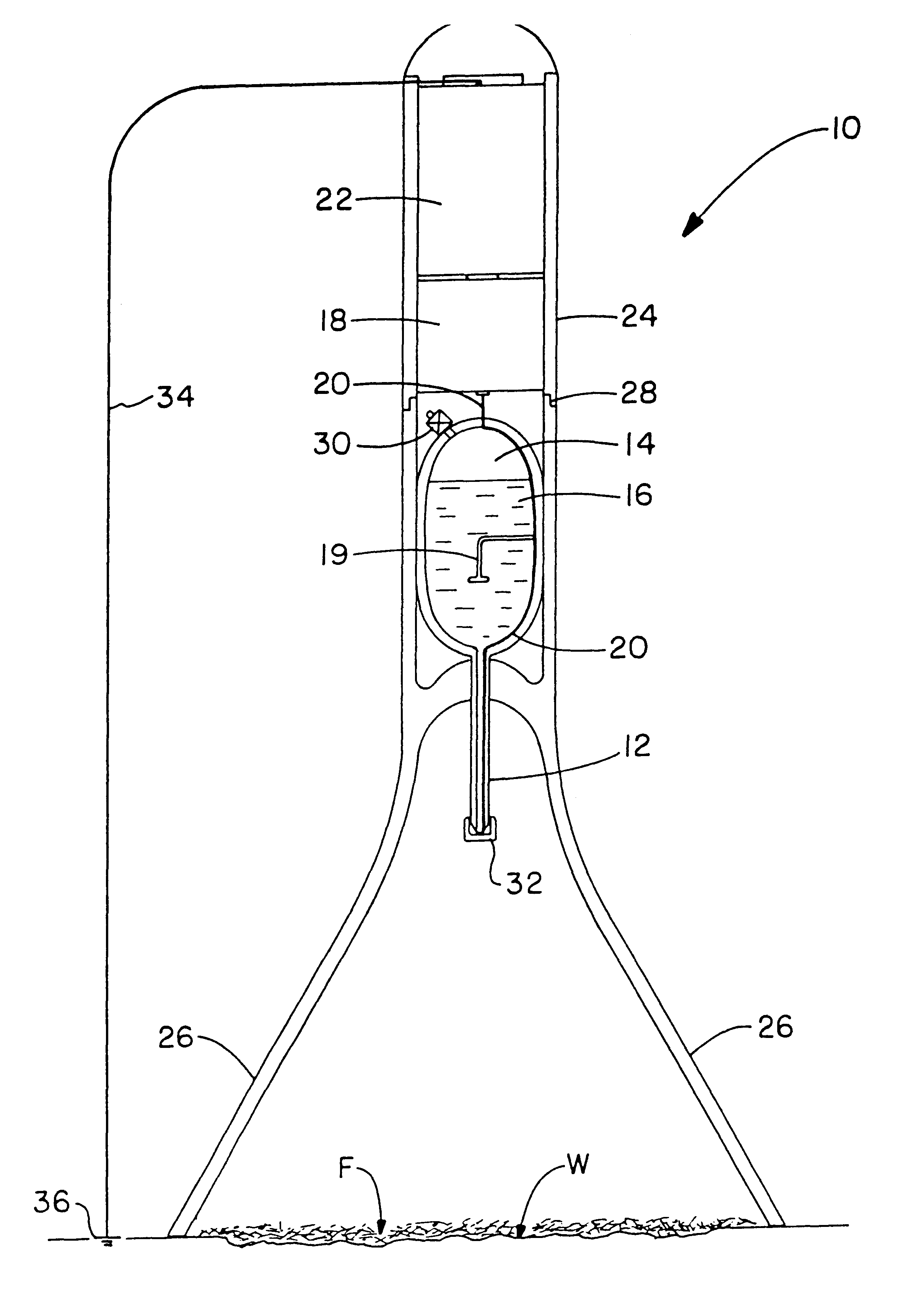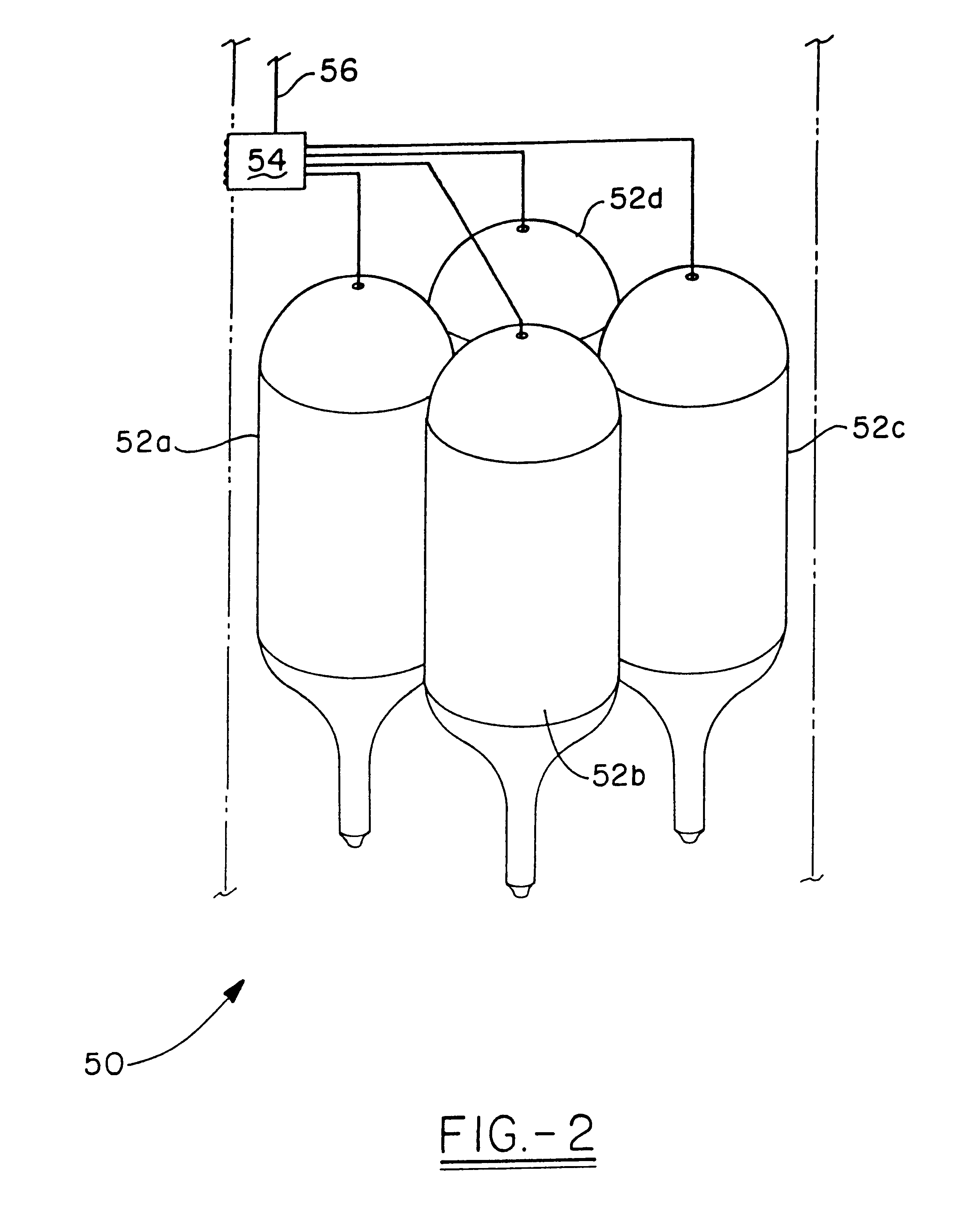Electrospun fibers and an apparatus therefor
- Summary
- Abstract
- Description
- Claims
- Application Information
AI Technical Summary
Benefits of technology
Problems solved by technology
Method used
Image
Examples
example 1
Wound dressings utilizing fibers containing Polycaprolactone and / or Linear Polyethylenimine
Materials:
Polycaprolactone (PCL) with an average molecular weight of 120,000 was purchased from Scientific Polymer Products, Inc. and was used as is. Linear Polyethylenimine (LPEI) was synthesized from 500,000 average MW Polyethyloxazoline. The latter was purchased from Sigma Chemical Co. The pH adjusting compound carboxypolymethylene, sold under the tradename Carbopol.RTM. (974P NF, Lot No: AB07525), was purchased from B.F. Goodrich while Alginic acid was obtained from Sigma Chemical Co.
Method: Polycaprolactone was dissolved in acetone to make an 18% (w:w) solution. Linear polyethylenimine was dissolved in ethanol making a 25% (w:w) solution. From these solutions, various samples were mixed. The ratio of 20:80 LPEI:PCL (w:w) was used for spinning the LPEI:PCL mixture. Moreover, several pH adjusting components were used with the spinning mixtures. When alginic acid or Carbopolg were used, the ...
example 7
Spinning LPEI and PCL without a pH adjusting component. A solution of 25% (w: w) LPEI in ethanol was made and mixed with a solution of 18% (w: w) PCL in acetone at ratio of 20:80. The mixture was spun with 15 KV at 7 inch (17.8 cm) gap distance at room temperature. The fiber was less than or equal to 1 .mu.m in size, white and very strong.
Sample 8:
Spinning LPEI and PCL with Carbopol.RTM. as an pH adjusting component. A solution of 25% (w: w) LPEI in ethanol was made and mixed with a solution of 18% (w: w) PCL in acetone at ratio of 20:80. The 2.9% (w: w) Carbopol.RTM. was added. The mixture was spun with 15 KV at 5-inch (12.7 cm) gap distance at room temperature. The fiber was less than or equal to 1 .mu.m in size, white and very strong.
Sample 9:
Spinning LPEI and PCL with alginic acid as a pH adjusting component. A solution of 25% (w: w) LPEI in ethanol was made and mixed with a solution of 18% (w: w) PCL in acetone at ratio of 20:80. The 2.9% (w: w) alginic acid was added. The mixt...
example 2
Production of fibers of various composite polymer solutions.
Materials:
Polycaprolactone (PCL) with an average molecular weight of 120,000 was purchased from Scientific Polymer Products, Inc. and was used as is. Linear polyethylenimine (LPEI) was synthesized from polyethyloxazoline with an average molecular weight of 500,000. The latter was purchased from Sigma Chemical Co. The pH adjusting compound carboxypolymethylene, sold under the tradename Carbopol(& (974P NF, Lot No: AB07525), was purchased from B.F. Goodrich while Alginic acid was obtained from Sigma.
Solutions of Polycaprolactone (PCL), Poly (2-hydroxymethacrylate) (Poly HEMA), Poly (vinyl pyrrolidone)(PVP), Poly (ethyloxazoline)(PEOz), Polyethylene oxide (PEO), and Linear Polyethylenimine (L-PEI) were used to make various composite polymer fibers as described below. PCL and PEO were obtained from Scientific Polymer Products of Ontario, N.Y. Poly HEMA, PVP, and PEOz, were obtained from Polysciences Inc. of Warring, Pa. Various...
PUM
| Property | Measurement | Unit |
|---|---|---|
| Fraction | aaaaa | aaaaa |
| Diameter | aaaaa | aaaaa |
| Diameter | aaaaa | aaaaa |
Abstract
Description
Claims
Application Information
 Login to View More
Login to View More - R&D
- Intellectual Property
- Life Sciences
- Materials
- Tech Scout
- Unparalleled Data Quality
- Higher Quality Content
- 60% Fewer Hallucinations
Browse by: Latest US Patents, China's latest patents, Technical Efficacy Thesaurus, Application Domain, Technology Topic, Popular Technical Reports.
© 2025 PatSnap. All rights reserved.Legal|Privacy policy|Modern Slavery Act Transparency Statement|Sitemap|About US| Contact US: help@patsnap.com



